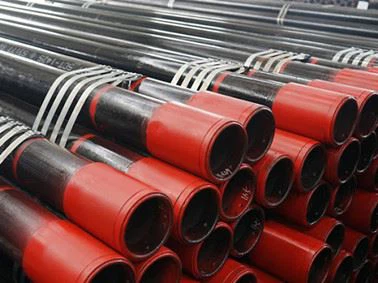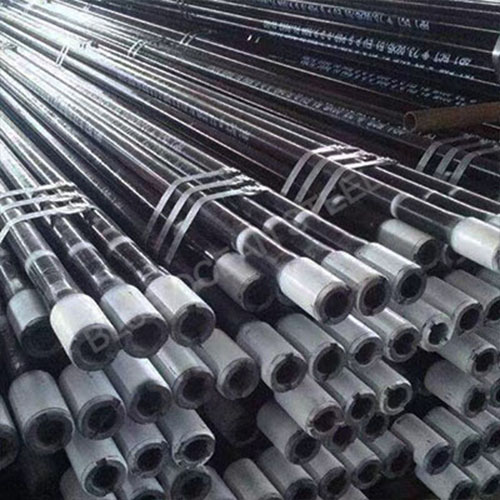Table of Contents
Benefits of Using Bimetallic Screw and Barrel for Plastic Extrusion
Plastic extrusion is a widely used manufacturing process that involves melting raw plastic material and shaping it into a continuous profile. This process relies heavily on the performance of the screw and barrel, which are essential components of the extruder machine. The screw and barrel work together to transport, melt, mix, and pressurize the plastic material, ensuring a consistent and high-quality output.
One of the key considerations when choosing a screw and barrel for plastic extrusion is the material used in their construction. Traditional Screws and barrels are typically made from nitrided steel, which offers good wear resistance but may not be suitable for processing abrasive or corrosive materials. In recent years, bimetallic screws and barrels have gained popularity due to their superior performance and durability.
Bimetallic screws and barrels are made by combining two different materials \\u2013 typically a high-wear resistant alloy for the outer layer and a high-temperature resistant alloy for the inner core. This unique construction allows bimetallic screws and barrels to withstand the harsh conditions of plastic extrusion, including high temperatures, abrasive materials, and corrosive additives. As a result, bimetallic screws and barrels offer several benefits over traditional nitrided steel components.
One of the main advantages of using bimetallic screws and barrels is their superior wear resistance. The outer layer of the bimetallic screw and barrel is made from a high-wear resistant alloy, such as Tungsten carbide or Stellite, which can withstand the abrasive effects of processing materials like glass-filled or mineral-filled plastics. This increased wear resistance extends the lifespan of the screw and barrel, reducing the frequency of replacements and maintenance costs.
In addition to wear resistance, bimetallic screws and barrels also offer improved corrosion resistance. The outer layer of the bimetallic components is designed to resist the corrosive effects of additives or processing materials that can degrade traditional nitrided steel screws and barrels. This corrosion resistance ensures that the extruder machine remains in optimal condition, reducing downtime and production interruptions.
Another benefit of using bimetallic screws and barrels is their enhanced thermal conductivity. The high-temperature resistant alloy used in the inner core of the bimetallic components allows for efficient heat transfer during the melting and mixing process. This improved thermal conductivity results in more uniform melting and mixing of the plastic material, leading to a higher quality output with fewer defects.

Furthermore, bimetallic screws and barrels offer increased strength and toughness compared to traditional nitrided steel components. The combination of high-wear resistant and high-temperature resistant alloys results in a more robust construction that can withstand the high pressures and stresses of plastic extrusion. This increased strength and toughness contribute to the overall reliability and performance of the extruder machine.
In conclusion, bimetallic screws and barrels offer several benefits for plastic extrusion applications, including superior wear and corrosion resistance, improved thermal conductivity, and increased strength and toughness. These advantages make bimetallic screws and barrels a cost-effective and reliable choice for manufacturers looking to optimize their extrusion processes. By investing in bimetallic screws and barrels, manufacturers can improve the efficiency, quality, and longevity of their plastic extrusion operations.
Common Issues and Solutions for Screw and Barrel Wear in Injection Molding
Plastic extrusion injection screw barrels are essential components in the injection molding process. They play a crucial role in melting, mixing, and injecting the plastic material into the mold cavity to create the final product. However, over time, these screw and barrel components can wear out due to the high temperatures and pressures involved in the injection molding process. In this article, we will discuss some common issues that can arise with screw and barrel wear in injection molding and explore potential solutions to address these issues.
One of the most common issues with screw and barrel wear in injection molding is abrasion. Abrasion occurs when the plastic material being processed wears Down the surface of the screw and barrel, leading to reduced efficiency and increased energy consumption. This can result in poor product quality and increased production costs. To address this issue, manufacturers can use wear-resistant materials for the screw and barrel, such as bimetallic or nitrided steel, which can help prolong the lifespan of these components.
Another common issue with screw and barrel wear is corrosion. Corrosion can occur when the plastic material being processed contains corrosive additives or when the processing conditions are not properly controlled. Corrosion can Lead to pitting and surface degradation of the screw and barrel, affecting the quality of the final product. To prevent corrosion, manufacturers can use corrosion-resistant coatings or materials for the screw and barrel, such as Stainless Steel or chrome plating, which can help protect these components from corrosive elements.
In addition to abrasion and corrosion, another common issue with screw and barrel wear is thermal degradation. Thermal degradation occurs when the plastic material being processed is subjected to high temperatures for an extended period, leading to the breakdown of the Polymer Chains and the formation of degradation by-products. This can result in poor product quality and reduced mechanical properties of the final product. To address thermal degradation, manufacturers can optimize the processing conditions, such as reducing the processing temperature or increasing the cooling rate, to minimize the exposure of the plastic material to high temperatures.
Furthermore, another common issue with screw and barrel wear is galling. Galling occurs when the screw and barrel components rub against each other during the injection molding process, leading to material transfer and surface damage. This can result in increased friction, wear, and potential failure of the screw and barrel components. To prevent galling, manufacturers can use lubricants or coatings on the screw and barrel surfaces to reduce friction and minimize material transfer between these components.

In conclusion, screw and barrel wear in injection molding can lead to various issues such as abrasion, corrosion, thermal degradation, and galling, which can affect the quality and efficiency of the injection molding process. By using wear-resistant materials, corrosion-resistant coatings, optimizing processing conditions, and using lubricants or coatings, manufacturers can address these common issues and prolong the lifespan of the screw and barrel components. Ultimately, taking proactive measures to prevent screw and barrel wear can help improve product quality, reduce production costs, and enhance the overall efficiency of the injection molding process.
